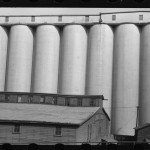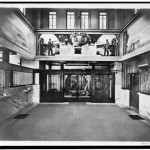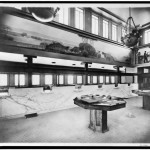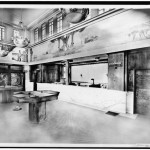
(From the Boston Public Library’s Print Division via Flickr/CC BY 2.0 >>)
CEDAR RAPIDS, Iowa — If you’ve seen the 2011 film “Cedar Rapids” starring Ed Helms, John C. Reilly and Anne Heche, don’t expect to see much of the movie’s setting here in Iowa’s second-largest city. It was actually filmed in Ann Arbor, Mich.
The real Cedar Rapids is still recovering from Iowa’s record floods in 2008, which inundated much of downtown and low-lying neighborhoods on either side of the Cedar River, including Czech Village. (The National Czech and Slovak Museum and Library, which was damaged during the floods, is currently hosting a special exhibition featuring the “280 dazzling pins [former Secretary of State Madeleine] Albright wore to emphasize the importance of a negotiation, signify high hopes, protest the absence of progress, and show pride in representing the United States,” according to the museum.)
I didn’t have that much time to explore Cedar Rapids. As I pressed westward on the Lincoln Highway, this was just a one-night stopping-off point for my trip. The one downtown feature that’s hard to miss when driving through town is the Quaker Oats complex, where towering grain elevators serve the company’s large cereal mill, which opened here in 1873.
Just like Jack Delano in Clinton, U.S. Farm Security Administration photographer John Vachon photographed Cedar Rapids as he traveled the nation in the late 1930s. Vachon’s July 1941 work in Cedar Rapids shows how central Quaker Oats has been to the development of Cedar Rapids, aided again by the railroad, which will be a common thread for the towns along the Lincoln Highway headed west.
Post continues below …
- (Photo by John Vachon/U.S. Farm Security Administration, via Library of Congress >>)
- (Photo by John Vachon/U.S. Farm Security Administration via Library of Congress >>)
- (Photo by John Vachon/U.S. Farm Security Administration via Library of Congress >>)
- (Photo by John Vachon/U.S. Farm Security Administration via Library of Congress >>)
***
Slightly downstream from Quaker Oats, in the center of the Cedar River, is Mays Island, home to the Veterans Memorial Building, which housed city hall until the devastating 2008 floods. Grant Wood, the Iowa artist known best for American Gothic, completed the building’s Memorial Window, his only stained glass commission, in 1929.
Post continues below …
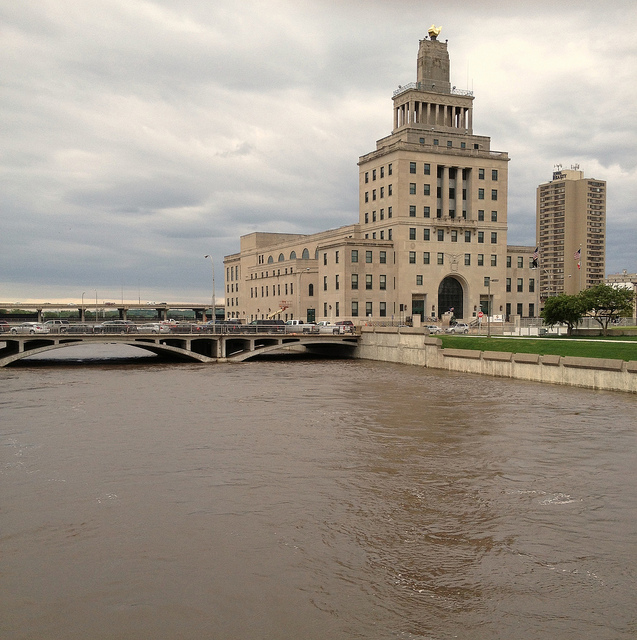
The Veterans Memorial Building on May’s Island in Cedar Rapids, Iowa. (Photo by Flickr user TangyPeech via CC BY 2.0 >>)
Opposite Mays Island, at Third Avenue SW and First Street SW on the west side of the river is the former Peoples Savings Bank building, a 1910 design by Chicago architect Louis Sullivan, who designed the Van Allen’s department store building back in Clinton. It too was damaged by the 2008 floods but there have been plans to renovate the building for restaurant and office use.
- The interior of the Peoples Savings Bank building in 1911. (Photo via the Library of Congress >>)
- The interior of the People Savings Bank building in 1911. (Photo via the Library of Congress >>)
- The interior of the Peoples Saving Bank building in 1911. (Photo via the Library of Congress >>)
- The interior of the Peoples Savings Bank building in 1911. (Photo via the Library of Congess >>)
Recovery has been slow on this side of the river, where few of the residents had flood insurance. This part of town has emptied out. Driving along the river, it feels very desolate.
Although there are plenty of cars driving through, they’re more often than not just passing from one side of the city to the other. There’s not much to stop for right now in the flood zone. The Wednesday night I drove in, the downtown area, where recovery has come faster, seemed somber to me, as if it were taking a big yawn.
There’s a lot of work to be done here in Cedar Rapids. The flood recovery has been progressing slowly.
But there is some bright news for the Cedar Rapids Public Library, which had to recover from losing a considerable section of its collections in the 2008 floods. Major construction on its new downtown building is completed and the interior work is wrapping up.
Cedar Rapids is taking recovery one step at a time.



